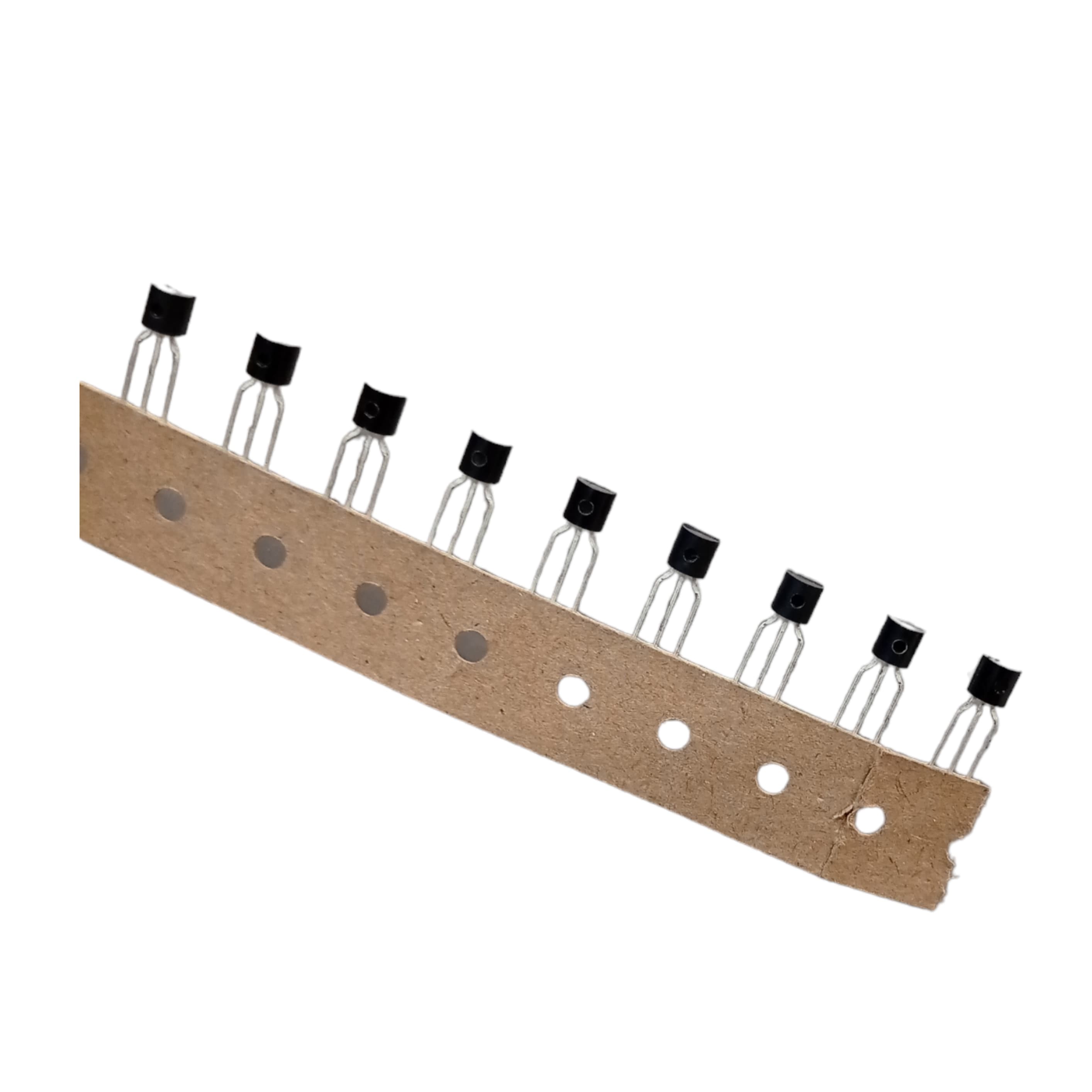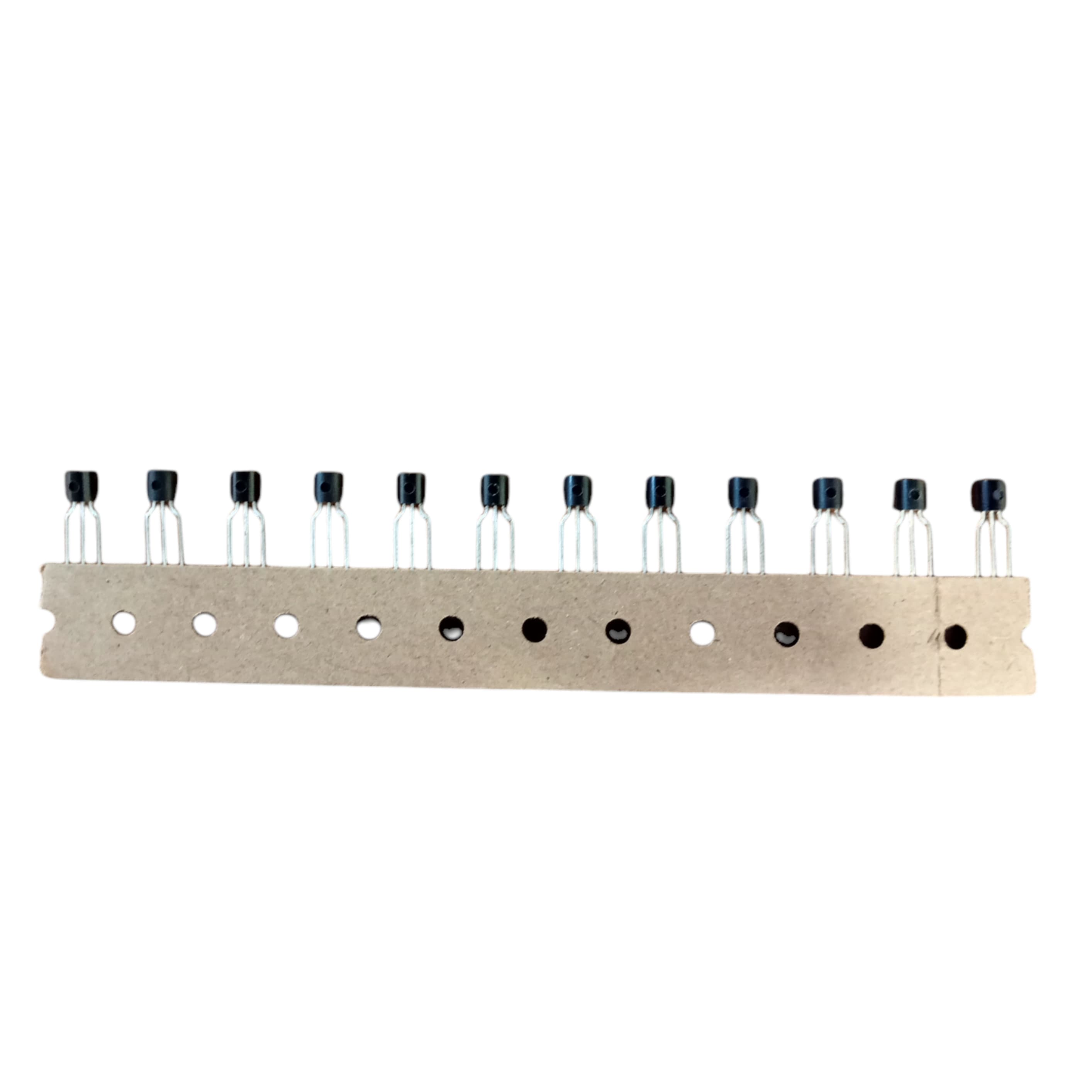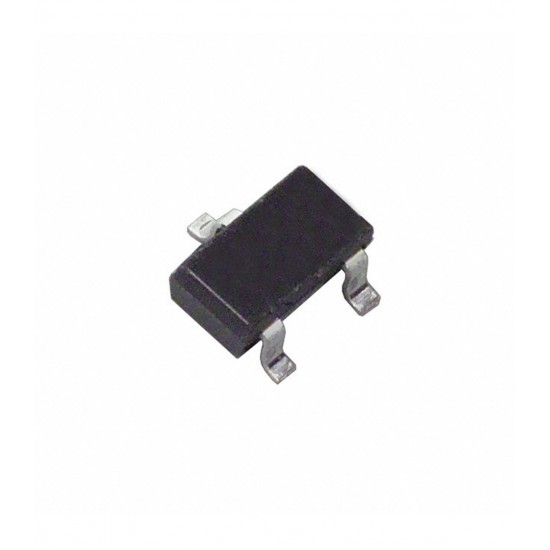An Overview: TCNL100 NPN Transistor
The TCNL100 is a general-purpose NPN transistor designed for switching and amplification applications. With a maximum voltage rating of 40V and a current rating of 100mA, this transistor is suitable for a variety of low-power electronic circuits. Its through-hole package makes it ideal for prototyping and easy integration into printed circuit boards (PCBs). The TCNL100 is known for its reliability and stable performance, making it a preferred choice for hobbyists and professionals alike.
Specifications:
| Parameter | Value |
|---|---|
| Part Number | TCNL100 |
| Package Type | Through-Hole |
| Transistor Type | NPN |
| Collector-Emitter Voltage (Vce) | 40V |
| Collector-Base Voltage (Vcb) | 40V |
| Emitter-Base Voltage (Veb) | 5V |
| Continuous Collector Current (Ic) | 100mA |
| Power Dissipation (Pd) | 625mW |
| DC Current Gain (hFE) | 100 – 300 |
| Transition Frequency (fT) | 250 MHz |
| Collector-Emitter Saturation Voltage (Vce(sat)) | 0.2V (max) at Ic = 10mA |
| Base-Emitter Saturation Voltage (Vbe(on)) | 0.7V (typ) at Ic = 10mA |
| Operating Temperature Range | -55°C to 150°C |
| Mounting Type | Through Hole |
Features:
- High Voltage Tolerance: Can handle collector-emitter voltages up to 40V, making it suitable for various low to moderate voltage applications.
- Moderate Current Handling: Capable of handling up to 100mA of continuous collector current, ideal for low-power circuits.
- High DC Gain: With a DC current gain (hFE) range of 100 to 300, the TCNL100 provides significant amplification of the input signal.
- Fast Switching: Transition frequency of 250 MHz allows for rapid switching in high-frequency applications.
- Low Saturation Voltage: The low collector-emitter saturation voltage (Vce(sat)) of 0.2V ensures minimal power loss during operation.
- Thermal Stability: Operates efficiently over a wide temperature range from -55°C to 150°C, ensuring reliable performance in various environments.
- Ease of Use: The through-hole package allows for easy installation and soldering, facilitating prototyping and DIY projects.
Applications:
- Signal Amplification: Commonly used in amplifier circuits to boost weak signals for audio, radio, and other communication applications.
- Switching Circuits: Ideal for switching applications in digital and analog circuits, controlling relays, LEDs, and other low-power devices.
- Oscillators: Used in oscillator circuits to generate periodic signals for various electronic applications.
- Voltage Regulation: Suitable for use in voltage regulation circuits, providing stable voltage output in power supplies.
- DIY Projects: Popular among hobbyists and makers for various DIY electronics projects due to its ease of use and reliability.
- Prototyping: Widely used in prototyping and experimental setups in educational and development environments.
Developments:
The TCNL100 transistor has seen continual improvements in manufacturing processes, leading to enhanced performance characteristics such as higher gain, lower saturation voltages, and increased frequency response. Innovations in semiconductor materials and fabrication technologies have contributed to greater reliability and efficiency, making transistors like the TCNL100 more versatile and effective in modern electronic designs.
Instruction for Use:
- Circuit Design: Ensure the transistor is used within its specified voltage and current limits to avoid damage. Design the circuit to provide appropriate biasing for optimal operation.
- Mounting: Insert the TCNL100 into the PCB ensuring correct orientation of the collector, base, and emitter leads. Solder the leads securely for reliable electrical connections.
- Heat Management: Although the TCNL100 has a moderate power dissipation capacity, consider heat sinks or adequate ventilation if used in high-temperature environments or prolonged operation.
- Biasing: Use appropriate biasing resistors to ensure the transistor operates in the desired region (cutoff, active, or saturation) depending on the application.
- Protection: Implement necessary protection mechanisms such as diodes or resistors to prevent voltage spikes or excessive currents that could damage the transistor.
- Testing: After assembly, test the circuit to ensure the transistor operates as expected. Check for correct voltage levels at the collector, base, and emitter terminals.
In summary, the TCNL100 NPN transistor is a versatile, reliable component ideal for a wide range of low-power electronic applications. Its ease of use, combined with high voltage and current handling capabilities, makes it a valuable addition to any engineer’s toolkit for amplification, switching, and prototyping purposes. Proper usage and handling will ensure optimal performance and longevity of the TCNL100 in your electronic projects.





Reviews
There are no reviews yet.